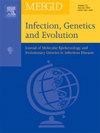ListPred:预测单核增生李斯特菌毒力潜能和消毒剂耐受性的ML工具。
IF 2.6
4区 医学
Q3 INFECTIOUS DISEASES
引用次数: 0
摘要
尽管目前有监测和卫生战略,但食源性病原体继续威胁着食品工业和公众健康。全基因组测序(WGS)已经达到了前所未有的分析和比较病原菌分离株的分辨率。分辨率的提高大大提高了追踪食源性病原体传播途径和污染源的可能性。此外,基于WGS数据的机器学习(ML)在预测重要微生物特性(如毒力、生长潜力和抗菌素耐药性)方面显示出了很好的应用前景。许多监管机构已经采用了WGS和ML方法。然而,食品行业并没有遵循类似的热情实施。一些可能的原因可能是缺乏计算资源和有限的专业知识来分析WGS和ML数据并解释结果。在这里,我们介绍了ListPred,一个ML工具来分析单核增生李斯特菌的WGS数据,李斯特菌是一种非常受关注的食源性病原体。ListPred依赖于基因组标记和来自之前两项研究的预训练ML模型,能够预测两个重要的细菌特性,即毒力潜力和消毒剂耐受性。ListPred只需要有限的计算资源,几乎不需要生物信息学专业知识,这对于食品工业的广泛应用是必不可少的。本文章由计算机程序翻译,如有差异,请以英文原文为准。
ListPred: A predictive ML tool for virulence potential and disinfectant tolerance in Listeria monocytogenes
Despite current surveillance and sanitation strategies, foodborne pathogens continue to threaten the food industry and public health. Whole genome sequencing (WGS) has reached an unprecedented resolution to analyse and compare pathogenic bacterial isolates. The increased resolution significantly enhances the possibility of tracing transmission routes and contamination sources of foodborne pathogens. In addition, machine learning (ML) on WGS data has shown promising applications for predicting important microbial traits such as virulence, growth potential, and resistance to antimicrobials. Many regulatory agencies have already adapted WGS and ML methods. However, the food industry hasn't followed a similarly enthusiastic implementation. Some possible reasons for this might be the lack of computational resources and limited expertise to analyse WGS and ML data and interpret the results. Here, we present ListPred, a ML tool to analyse WGS data of Listeria monocytogenes, a very concerning foodborne pathogen. ListPred relies on genomic markers and pre-trained ML models from two previous studies, and it is able to predict two important bacterial traits, namely virulence potential and disinfectant tolerance. ListPred only requires limited computational resources and practically no bioinformatic expertise, which is essential for a broad application in the food industry.
求助全文
通过发布文献求助,成功后即可免费获取论文全文。
去求助
来源期刊

Infection Genetics and Evolution
医学-传染病学
CiteScore
8.40
自引率
0.00%
发文量
215
审稿时长
82 days
期刊介绍:
(aka Journal of Molecular Epidemiology and Evolutionary Genetics of Infectious Diseases -- MEEGID)
Infectious diseases constitute one of the main challenges to medical science in the coming century. The impressive development of molecular megatechnologies and of bioinformatics have greatly increased our knowledge of the evolution, transmission and pathogenicity of infectious diseases. Research has shown that host susceptibility to many infectious diseases has a genetic basis. Furthermore, much is now known on the molecular epidemiology, evolution and virulence of pathogenic agents, as well as their resistance to drugs, vaccines, and antibiotics. Equally, research on the genetics of disease vectors has greatly improved our understanding of their systematics, has increased our capacity to identify target populations for control or intervention, and has provided detailed information on the mechanisms of insecticide resistance.
However, the genetics and evolutionary biology of hosts, pathogens and vectors have tended to develop as three separate fields of research. This artificial compartmentalisation is of concern due to our growing appreciation of the strong co-evolutionary interactions among hosts, pathogens and vectors.
Infection, Genetics and Evolution and its companion congress [MEEGID](http://www.meegidconference.com/) (for Molecular Epidemiology and Evolutionary Genetics of Infectious Diseases) are the main forum acting for the cross-fertilization between evolutionary science and biomedical research on infectious diseases.
Infection, Genetics and Evolution is the only journal that welcomes articles dealing with the genetics and evolutionary biology of hosts, pathogens and vectors, and coevolution processes among them in relation to infection and disease manifestation. All infectious models enter the scope of the journal, including pathogens of humans, animals and plants, either parasites, fungi, bacteria, viruses or prions. The journal welcomes articles dealing with genetics, population genetics, genomics, postgenomics, gene expression, evolutionary biology, population dynamics, mathematical modeling and bioinformatics. We also provide many author benefits, such as free PDFs, a liberal copyright policy, special discounts on Elsevier publications and much more. Please click here for more information on our author services .
 求助内容:
求助内容: 应助结果提醒方式:
应助结果提醒方式:


